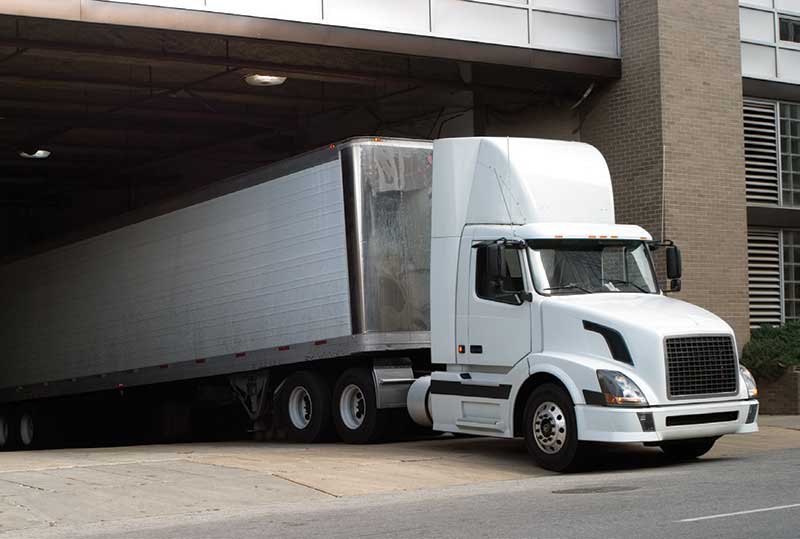LTL Update: Enter the post-Yellow world
The cessation of Yellow continues to have repercussions throughout the $58 billion LTL market. Now, a shuffling of the capacity equation is causing strategic changes, and shippers need to adapt to the new alignment of resources to find operational success.
It’s rare indeed when roughly 9% of any trucking sector simply disappears. But that’s exactly what happened in the $58 billion less-than-truckload (LTL) market last Aug. 7.
That’s when Yellow Corp.—the third-largest LTL carrier and 13th largest overall trucking company—ceased operations. Almost immediately, $5.25 billion of capacity exited the market place.
So, how did this change the landscape for LTL shippers?
Well, it’s not what was expected. For one thing, sharply higher rates were not in the offing. However, despite the highly publicized failure of a troubled company like Yellow that was teetering on bankruptcy for more than 20 years, the industry and its fellow competitors are forecast to do quite well in the economic rebound forecast for later in 2024.
“LTL is the darling of the trucking industry,” says Satish Jindel, principal of SJ Consulting, which closely tracks the sector. “LTL continues to have significant barriers to entry, and nothing will change that.”
The once-staid LTL industry—which has reinvigorated itself due to better pricing, more accurate dimensional-based weighing, more traditional measures of productivity, and just better overall management and rate discipline—is now, pound-for-pound, the most profitable sector of the overall $900 billion trucking industry.
“We’re hopeful for a rebound in 2024…But there’s so much uncertainty in the market place. There are so many macro issues, such as overall consumer confidence, the election year, and how all that uncertainty weighs on freight levels. My crystal ball is somewhat dim because there are so many variables. But we manage our business through good times and bad.” - Greg Plemmons, Old Dominion Freight Lines
How did that happen? Experts and industry executives contacted by Logistics Management are bullish on the sector and effusive in their praise of the price discipline during the latest freight downturn and inventory drawdown.
“The LTL industry is doing well throughout this freight recession,” says Chuck Hammel, president of Pitt Ohio, the nation’s 15th-largest LTL carrier. “I would categorize it as good, not great.” With that, let’s examine some of the factors behind the latest LTL market resurgence in our annual, first-quarter deep dive into the sector where 90% of the market is controlled by the top 25 carriers.
Post Yellow
The key to profitability in the LTL industry is matching equipment with demand. If you can supply enough trucks and drivers on enough profitable freight lanes with a decent idea of your costs and price freight accordingly, chances are you will be profitable.
So, how is the supply/demand equation looking for 2024? Are carriers anticipating a strong rebound in LTL freight?
“From a supply side, both drivers and equipment are still in short supply,” says Hammel. “However, that’s improving. From a demand side, I’m cautiously optimistic. I don’t think there’s currently a lot of capacity in the LTL space since Yellow closed, so it wouldn’t take a strong rebound for the LTL sector to do well.”
Jason Seidl, surface transportation analyst for TD Cowen, says that Yellow’s exit continues to produce ripple effects across the LTL network. “Big winners from the Yellow bankruptcy appear to be market leader ODFL, XPO Logistics, Saia and Pitt Ohio, among other LTL rivals,” he says. “ODFL topped its own forecast as well as Wall Street consensus expectations in the first full quarter after Yellow’s closing.”

With most analysts forecasting a slower environment for LTL carriers, Seidl notes that “ODFL maintains its high-quality service offering through the Yellow volatility.” ODFL’s third-quarter tonnage fell 8.4% and came in below estimates. Analysts chalked this up to the carrier’s rate discipline in pursuing ex-Yellow freight in the marketplace—and they also maintained a 99% on-time service performance and 0.1% cargo claims.
“We saw an initial surge of about 3,000 shipments a year. That has held,” says Greg Plemmons, ODFL’s chief operating officer. “There’s a segment of that [ex-Yellow] business that continues to bounce around looking for a home.”
Analysts estimate ODFL has 25% to 30% excess capacity in its network, and that has enabled the carrier to methodically absorb freight when it fits into its existing network. “We really don’t chase volume at the expense of service—ever,” says Plemmons. “We’ve seen some competitors take on too much of that freight, and they’ve suffered service deterioration. We try to be disciplined on that freight.”
Most LTL executives strike a cautious tone on 2024 tonnage growth, citing ample excess capacity in the marketplace. Others say that the LTL sector doesn’t have as much excess capacity as some reports make it, even with Yellow’s $5 billion hole in the market.
Post Yellow, most LTL executives say that they want to be measured with their approach—they believe that slow and steady wins the race.
“We did observe a short-term surge in demand immediately after Yellow closed,” says Kent Williams, executive vice president of sales and marketing for Averitt Express. “However, this has since leveled off, which was in line with our expectations. Yellow was not a major player in the regional and inter-regional next-day markets, which are our strengths.”
The way to win market share, LTL executives say, is to do it in the right way by executing superior service at a fair price to their customers—all while offering a value that’s unmatched in the sector.
“We’re hopeful for a rebound in 2024,” adds ODFL’s Plemmons. “But there’s so much uncertainty in the market place. There are so many macro issues, such as overall consumer confidence, the election year, and how all that uncertainty weighs on freight levels. My crystal ball is somewhat dim because there are so many variables. But we manage our business through good times and bad.”
Future plans
The failure of Yellow caused an upheaval in the once-staid LTL market that had not seen a similar capacity collapse since Consolidated Freightways suddenly closed on Labor Day 2003.
“Post-Yellow, we’re seeing LTL carriers living in a post-Yellow tsunami period,” says Mike Regan, chief relationship officer with TranZact, a technology and freight bill payment company. “Nine months ago, they had no problem with your oversize freight. Now they want to charge you an arm and a leg.”
What LTL carriers now understand—and shippers agree—is that excess capacity has gone away because of a significant freight recession the latter part of last year.
 “I’ve talked to a lot of carrier executives and they all say that the LTL market is balanced between supply and demand,” Regan adds. “There will be a capacity issue when the economy rebounds. That will happen.”
“I’ve talked to a lot of carrier executives and they all say that the LTL market is balanced between supply and demand,” Regan adds. “There will be a capacity issue when the economy rebounds. That will happen.”While truckload rates fell between 15% and 20% last year, LTL rates held relatively constant with changes in the mid-single digits on a percentage basis. However, analysts and LTL executives say a solid economic rebound this year could cause rates to rise precipitously—mainly because of barriers to entry.
“Yellow going out could not have happened at a better time for rival carriers,” says market analyst Jindel. “It added business for other carriers who were in a slow period economically. Plus, it eliminated a carrier that did’t know how to price things correctly.”
The Top 25 entrants in the LTL sector control nearly 90% of the freight in the market place. That leads to pricing power. Trucking executives say that they’re not afraid to exert that power if capacity gets tight once again.
“The big thing LTL carriers are doing is managing their pricing better,” adds Jindel. “If shippers are unhappy with rate increases, I say: ‘If you got rid of your bad shipping habits, total transportation spend would be lower.’ For carriers to make more, it’s imperative to take the waste out of the system. That originates with the shippers.”
Averitt’s Williams adds that he’s expecting increased inventory restocking this year and “hopefully a return to sustained economic growth. We’re expecting a noticeable uptick in the spring.” The upshot: rate increases in the mid-single digits can be expected for shippers renegotiating their LTL contracts this spring.













